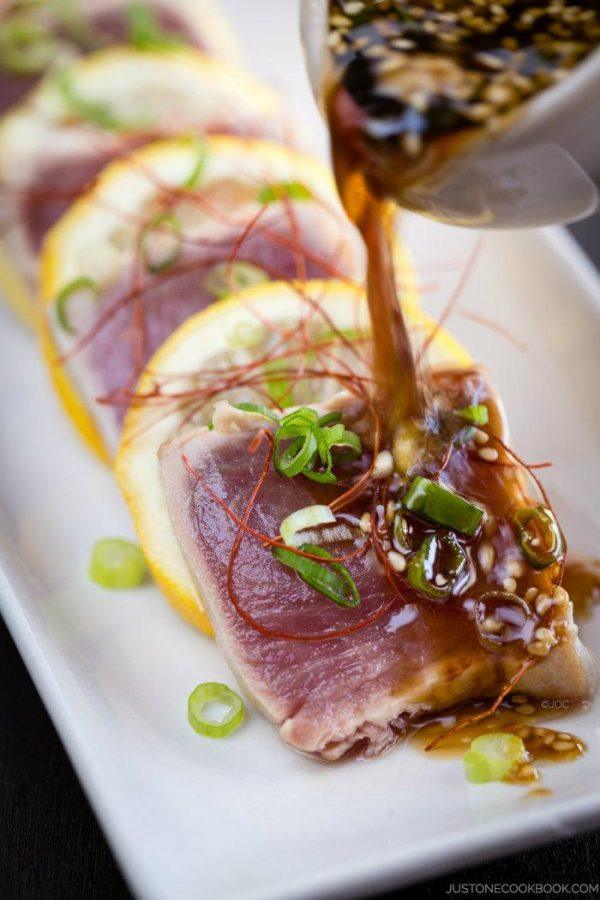Sushi Egg Recipe: A Simple Guide to Perfectly Cooked Tamagoyaki
Guide or Summary:IngredientsEquipmentPreparationCooking the TamagoyakiTips for PerfectionEmbark on a culinary journey that takes you from the bustling stree……
Guide or Summary:
Embark on a culinary journey that takes you from the bustling streets of Tokyo to the comforting warmth of your kitchen. Today, we're diving deep into the world of Japanese cuisine, specifically focusing on the art of making sushi eggs, or Tamagoyaki. This classic Japanese delicacy is not merely a dish but an embodiment of culinary precision and patience. In this article, we'll unravel the secrets to crafting the perfect Tamagoyaki, ensuring your sushi egg recipe stands out from the rest.
Ingredients
The foundation of any successful Tamagoyaki lies in its ingredients. Here's what you'll need:
- 3 eggs
- 2 tablespoons of soy sauce
- 1 tablespoon of mirin (sweet rice wine)
- 1 tablespoon of dashi (Japanese fish stock powder), dissolved in 100ml water
- 1 teaspoon of sugar
- 1 teaspoon of vegetable oil (for cooking)
Equipment
To achieve the perfect texture and shape, you'll need the following kitchen tools:
- A non-stick frying pan
- A wooden spatula (or a flat spatula)
- A large bowl
- A whisk or fork
- A bamboo mat or a clean kitchen towel
Preparation
Before we dive into the cooking process, let's prepare our ingredients. Crack the eggs into a large bowl and whisk them vigorously until the yolks and whites are fully combined. This step is crucial for achieving a uniform texture in your Tamagoyaki.

Next, add the soy sauce, mirin, dashi solution, and sugar to the bowl. Stir gently until all the ingredients are well combined. The mixture should be slightly thick but pourable.
Cooking the Tamagoyaki
Now, it's time to cook your Tamagoyaki. Here's a step-by-step guide:
1. Heat the non-stick frying pan over medium heat. Once hot, add a small amount of vegetable oil to the pan.
2. Pour a small amount of the egg mixture into the pan, tilting it to spread the batter evenly. Cook for about 30 seconds or until the bottom is set.
3. Using the wooden spatula, carefully lift one side of the Tamagoyaki and tilt the pan to allow the uncooked egg to flow underneath. Cook for another 30 seconds.
4. Repeat this process, adding more egg mixture to the pan and cooking in layers, until all the batter is used.
5. Once all the layers are cooked, remove the Tamagoyaki from the pan and place it on a bamboo mat or a clean kitchen towel. Roll it up tightly, starting from the narrow end.

6. Slice the Tamagoyaki into bite-sized pieces and serve it with soy sauce or wasabi for dipping.
Tips for Perfection
- Practice makes perfect. The key to mastering Tamagoyaki is practice. Don't get discouraged if your first few attempts don't turn out as expected.
- Be patient. Cooking Tamagoyaki requires patience. Take your time with each layer to ensure even cooking.
- Use the right equipment. A non-stick frying pan and a wooden spatula are essential for achieving the perfect texture and shape.
In conclusion, making sushi eggs or Tamagoyaki is not just about following a recipe; it's about embracing the art of Japanese cuisine. With the right ingredients, equipment, and technique, you can create a delicious and visually appealing Tamagoyaki that will impress your family and friends. So, gather your ingredients, roll up your sleeves, and let's get cooking!